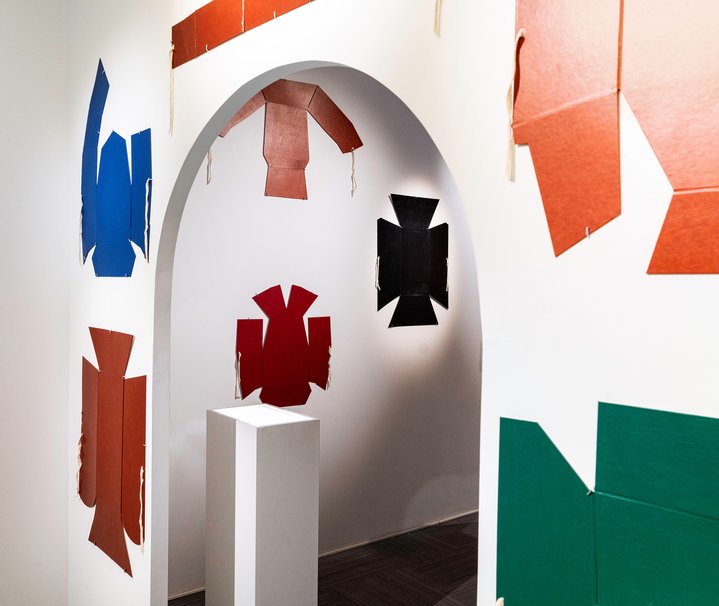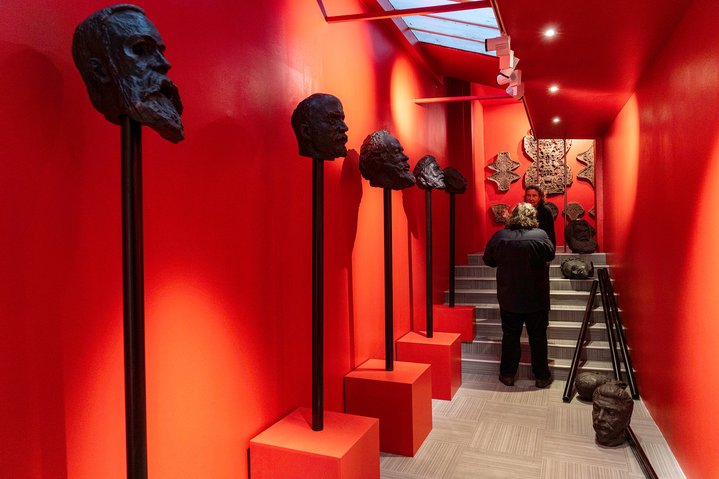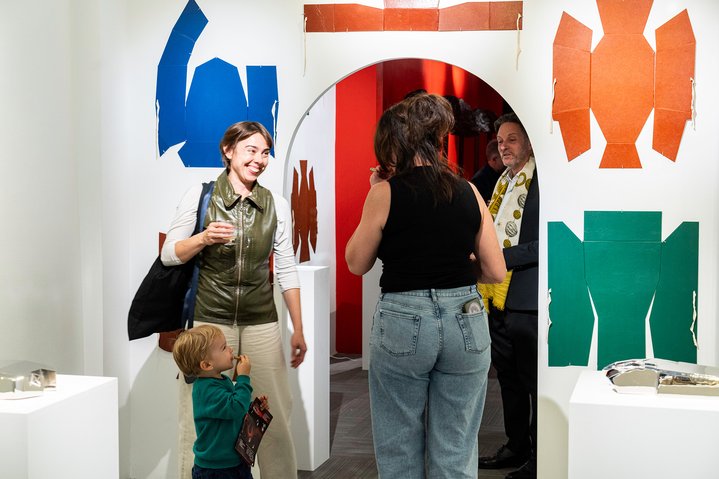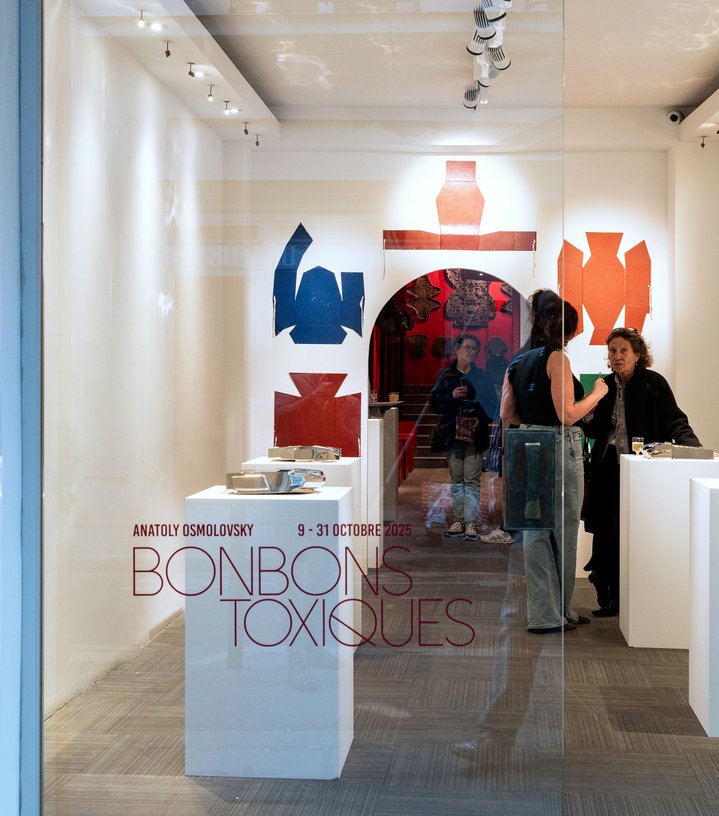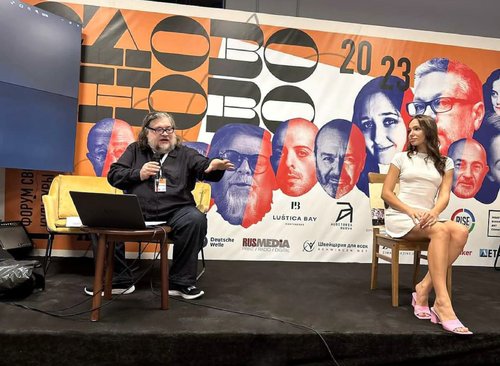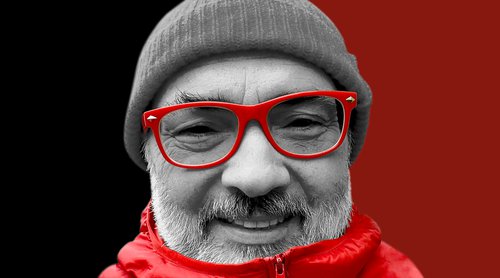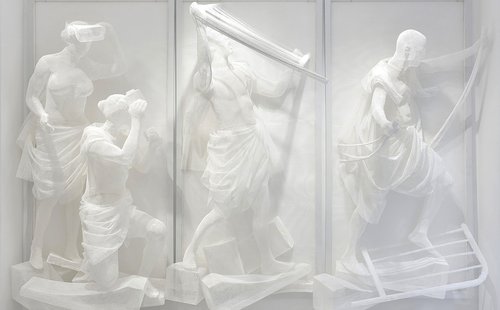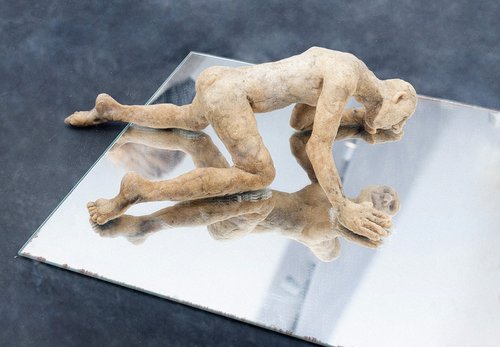Osmolovsky feeds parisians with toxic bonbons
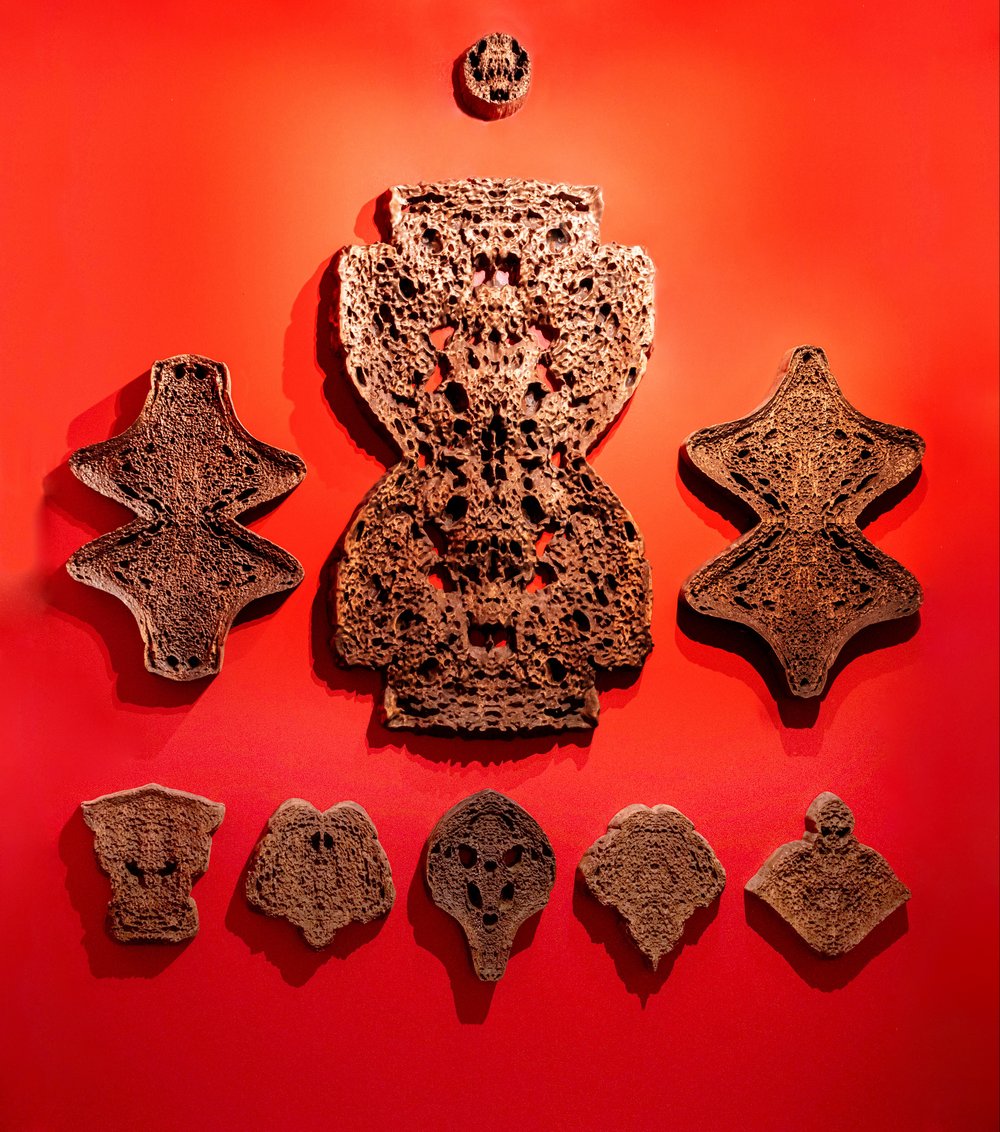
Anatoly Osmolovsky. Toxic bonbons. Exhibition view. Paris, 2025. Courtesy of Galerie Vallois
Galerie Vallois has opened a solo exhibition of Anatoly Osmolovsky an artist whose controversial works have resulted in his being declared a foreign agent by the Russian authorities. Bringing together series of artworks produced over different years, it is less retrospective more a quick look back at a creative journey that never ends.
This solo exhibition by renowned Russian underground artist, theorist and poet Anatoly Osmolovsky (b. 1969) at Galerie Vallois in the heart of Parisbrings together five series of works created between 2010 and 2020, curated by Russian curator Andrei Erofeev. Both artist and curator are recent emigrants – Osmolovsky fled Russia after his Moscow flat was searched by the Russian authorities and now lives in Berlin; Erofeev lives in Paris. The exhibition features alluring nickel-plated bronze sculptures, dark Soviet office folders and gruesome dismembered heads of communist leaders and political theorists. Osmolovsky's toxic bonbons are exquisitely crafted and beautiful, like sweet wrappers, but with a terrible filling. Eastern and Asian utopias, dictatorship mythology, aesthetics, and military machinery have always held a certain allure for Western culture due to their grandiosity and scale. The artist is often seen as a lone fighter against it all.
However, as curator Erofeev puts it, Osmolovsky’s works “do not resemble what the audience usually associates with the concept of Russian art”. Despite his constant tension with the authorities over decades, Osmolovsky neither positions himself as a victim of the regime nor glorifies his own artistic figure. Instead, he allows his solid, unchanging artworks to bear witness to the rapidly changing global landscape. Osmolovsky, as one of the leading figures of Russian contemporary art and as a co-founder with Svetlana Baskova of Baza, an independent art school in Moscow, is not presenting himself as an all-knowing maestro. Here is it more a summary of his work to date and a reflection on the new meanings that his art has acquired newly assembled here in Paris. One of the fruits of these reflections is a bilingual English-French catalogue, published by Galerie Vallois, featuring essays by Andrei Erofeev and Jean-Hubert Martin, as well as a short autobiography by Osmolovsky, ‘Primus in Proximo’.
As I entered the gallery I came face to face with five nickel-plated bronze sculptures from 2016, named after different models of Soviet and Russian tanks. Stripped of their caterpillar tracks, they do not resemble realistic miniature models or toys, but rather abstract sculptural objects. The shiny, polished surface of the tanks welcomes you to touch them. Deceptively harmless, yet they hide a deadly power inside.
Around the walls are Soviet office folders with small ropes hanging down from them. For Western European audiences it may be difficult to immediately understand what they are, plucked straight from the old, closed world of Soviet bureaucracy. When unfolded and hung on the wall, these dark folders might resemble either a strange collage or an origami blank. For Osmolovsky, however, their shape resembles a tank. This series illustrates the direct link between state bureaucracy and arms production, as well as the omnipresence of military aesthetics in daily life. Everyday stationery turns into a symbol of military power.
Elsewhere are two lightboxes from Osmolovsky’s 2015 ‘Avant-garde stationery: watermarks’ series, made just one year after the start of the armed conflict in the East of Ukraine. At first glance, you might see empty sheets of paper but illuminated and viewed from a certain angle, the watermarks reveal the tracks of tank tyres. In Derrida's terms, the war machinery, whose physical presence was officially denied by officials, becomes spectralised.
This spectralisation, as Derrida writes, works as well for another series in the show, ‘Is it you who did this?’ No, it’s you who did this (Heads of Dead Revolutionaries)’. These decapitated heads of Marx, Lenin, Mao Zedong, Stalin, Che Guevara, Ho Chi Minh and Bakunin on sticks right in the heart of Saint-Germain-des-Prés, pay homage not only to France as the motherland of the guillotine, but also to the country where Picasso allegedly replied to Nazi officers’ questions about Guernica, ‘No, you did this’. The symbolically decapitated fathers of communism remain very much alive, not only in thoughts, but also in the toponymics of Paris. Try walking from Stalingrad metro station to one of the many streets named after Lenin in the French capital. Dead but alive the figures of communist ideologists fit both into post-Soviet “culture of memory, which has become a kind of ‘encounter between the living and the dead’”, as Nina Tumarkin wrote.
The counterpoint in the exhibition is one version of his legendary installation ‘The Bread’, specially produced for Galerie Vallois. Enlarged slices of black rye bread installed to resemble an Orthodox iconostasis bring us to the very core of today’s totalitarian reality: a quasi religious Eurasianism idea of tradition covering up the poverty and despair in our society. There is no longer any gloss, only raw, tough reality.
Now living in exile after having to close his school Baza, having lost his archives and works after being labelled a foreign agent by his native country, Osmolovsky is on his own. In this exhibition, curated by Erofeev, one of the foremost specialists in modern Russian art and former head of the now defunct Tretyakov Gallery’s contemporary art department, Osmolovsky invites us to explore the current threats that appear to spread from one country to another at an alarming rate. He reflects on the appeal of power, violence, and oppression. Even when wrapped in shiny paper, evil still destroys everything around it. It is omnipresent and parasitic; it can grow like mould on any surface.
Looking at the perfectly shaped tank armour the first thing you see is your own reflection. For many, it is painful to confront this reality and overcome their willingness to obey orders. The bread of the motherland is bitter and hard to digest.






